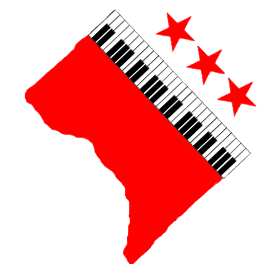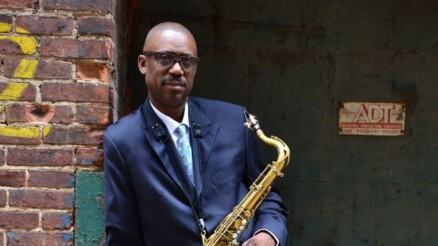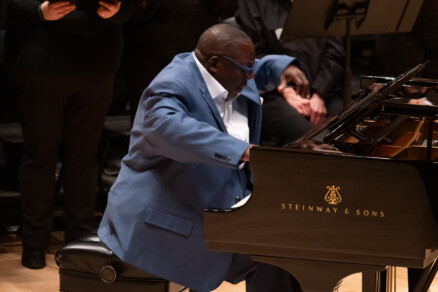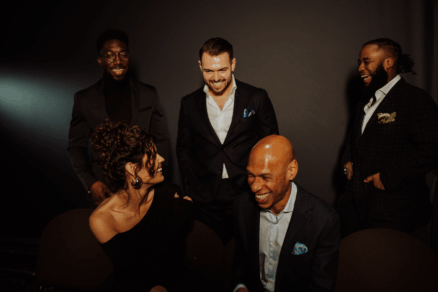Craig Handy on Mingus, major labels and that irresistible New Orleans second line groove

Craig Handy, a bright and tuneful post-bop saxophonist, is among the assortment of artists recently signed to OKeh Records, the Sony imprint that began releasing albums again last year after a long, dormant stretch. (It hadn’t been jazz-specific since the early 20th century, when it pressed vinyl featuring the likes of Duke Ellington and Louis Armstrong.) The label returns at a complicated time, new formulas being tested and experiments arising in unexpected places. Of everyone on OKeh’s roster, which ranges from established stars like Bill Frisell to newcomers such as James Brandon Lewis, Craig Handy may be the most emblematic of what’s happened in the industry over the past 20 years.
Throughout the 1980s and early 1990s, the young saxophonist from Oakland apprenticed himself to some legendary personas, playing in the bands of Art Blakey, Roy Haynes and Abdullah Ibrahim. It was a good time to be climbing the ladder in the traditional fashion: Buoyed by a revival of interest in classic, midcentury jazz and by the CD sales boom (people were buying up reissues of their favorite vinyl records by the score), labels like Blue Note and Verve reinvested in the music. But by the early 2000s, digital downloading and changing tastes had popped the CD bubble and musicians with expertise in traditional jazz now saw limited options for industry-backed prominence.
Handy was one of those guys. He put out four strong albums between 1991 and 2000, then didn’t release anything under his own name for the next 13 years. In the meantime, he toured continuously with three well-known ensembles that play Charles Mingus’ repertory, and kept his solo career going. Handy’s sharp but flowing improvisational ideas — like ice water on a hot day, sipped or sprayed playfully in your face — and the lessons he’d picked up from his mentors kept him exploring. A few years ago, he settled on an idea for a band. With his quintet, which he titled 2nd Line Smith, Handy enmeshed the age-defying, classic dance music of New Orleans with another distinctly soulful American tradition: organ-driven jazz.
Handy arrives in D.C. today with 2nd Line Smith to begin a two-night run at Bohemian Caverns. In an interview last week, the saxophonist discussed how his band came together, how he intends to use his newfound platform, and what he learned from his years in the Mingus ensembles.
CapitalBop: You’re not from New Orleans, but your band has that theme — and you guys’ live show really conveys the city’s energy. Where did you get the inspiration for this project?
Craig Handy: I got the inspiration to do the music that way from actually listening to a couple of Jimmy Smith solos — two of his biggest hits, “High-Heel Sneakers” and another, “The Cat.” Those songs are basically just modified New Orleans second line rhythms, street beats, and those are two of his biggest hits. I was trying to figure out why those were more popular than his other songs. And it dawned on me that those were like less filtered versions of the music—they were closer to traditional New Orleans second line street beats, so I thought, Well, that’s it. Because I was playing quartet with the guitar, organ and drums, straight-ahead organ quartet, for about four or five months, with the same guys in the band. We were doing lots of gigs and lots of Jimmy Smith stuff. And it dawned on me: This has already been done before. Let’s reduce it, put it on the stove and turn the heat up, and see what we’re left with.
And that’s also when I started to use the sousaphone. Because you can’t have a New Orleans brass band without a sousaphone. So the concept is basically New Orleans brass band meets modern jazz quintet. You get a danceable beat that you can move to, but you can still explore the melody and the material, whatever it might be.
The other reason that I started the band was that I was tired of the intellectual, academic approach to playing jazz. A lot of people have gone down that road, and it seems like people are missing something. I’m not saying everybody, but I listen to a lot of bands and if you’re going to swing there’s got to be something in it that can make you dance as well. It’s gotten to the point now that it’s gone in the other direction—it’s moved away from being able to connect emotionally. It’s about connecting with it intellectually and cerebrally. I thought, “We gotta do something about this.”
CB: Now being on the new OKeh label, did you feel like you had an opportunity to do some evangelism, make a statement?
CH: I definitely think this is a great opportunity to make a statement. But it comes from the fact that I’ve ben playing this music for over 30 years now, and what I realized is that when I started playing when I was a youngster, a teenager, I wasn’t necessarily playing for everybody else. It was more coming from a place where I needed to express myself, to find out who I was, to figure out where I fit in society. As I began to play more and more I started to see that there was a power in a musician’s ability to transmit a very strong healing energy.
There was a transitional period in my thirties, and maybe somewhere in my forties too, where I started to really understand that this is something that can be very spiritual and very sacred. I started to use that when I performed. Because when I get into the headspace and the groove and where I want to be, it’s really about just having fun and trying to create something positive in the world
CB: You played for years in the Mingus Big Band, Mingus Dynasty and Mingus Orchestra. What effect has Charles Mingus had on your playing and your composing as a result?
Well, Charles Mingus was a great composer first of all, who was largely overlooked during his lifetime because he was known for having an irascible temper and being very unpredictable and unconventional. So people kind of disregarded his music during his life. But you have to remember that Charles Mingus was a disciple of the Duke Ellington school of composition, and Thelonious Monk as well. He’s more of a continuation of that school of thought, if you will—not to diminish his work.… He wrote something like 300 songs. And I think two of the most beautiful ballads ever written are “Goodbye Pork Pie Hat” and “Duke Ellington’s Song of Love.” They still rank as among my favorite songs of all time.
The very first tour I did with Mingus Dynasty was with Jimmy Knepper, Horace Parlan playing piano, Dannie Richmond on drums: Everybody on the bandstand had been with Mingus in his life, except me and the bass player. And through the years I’ve gotten to be on the bandstand with many other great musicians who had played with Charles Mingus. So you know, that kind of experience you cannot buy at a university or a musical institution. That is simply something that you get from being around people that play music for a living and have been playing with the masters
CB: Your records clearly display a historian’s love for repertory and gems from all throughout the American music tradition. You’ve got “Organ Grinder’s Swing” and “Mojo Workin’” on this new record. Do you choose your tunes with any particular criteria in mind?
CH: For this particular project, I didn’t really think too much about the eras that they came from. I primarily thought about what was going to translate for me, personally — what resonated and how I was going to be able to apply this formula, the second line rhythm and the organ. What I think I was drawn to was the way that these songs were constructed — and what was immediately translatable into this formula. Oddly enough, each of the songs that I chose I’d already had the idea in my head of what I wanted, more or less. I had a very clear idea about how I wanted to approach it.
We never spent much time rehearsing it and I just told each of the drummers, “This is more or less the beat that I want, and you can put the fine particulars on it but this is the idea.” And they all came up with these incredible beats. I had a loose idea of arrangement in my head, and we just played it once or twice and recorded it.
—
Craig Handy and 2nd Line Smith perform Friday and Saturday at Bohemian Caverns, at 8:30 and 10:30 p.m. both nights. Tickets can be purchased here, and more information is available here.
Craig Handy, DC, DC jazz, jazz, New Orleans, New Orleans jazz, second line, Washington




